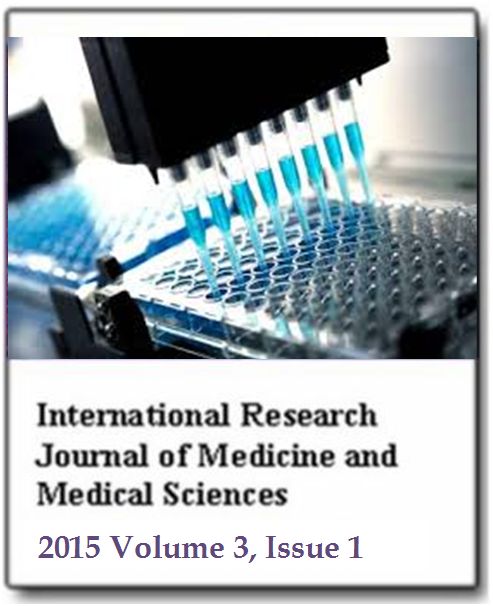Effect of facilities in decreasing the perinatal mortality rate in Misurata Teaching Hospital, Libya
Salima Alburke, Bashir Ashur and Muktar AssadiInternational Research Journal of Medicine and Medical Sciences
Published: January 9 2015
Volume 3, Issue 1
Pages 1-8
Abstract
Infant and under-5 childhood mortality rates in developing countries have declined significantly in the past 2 to 3 decades. World leaders agreed on a critical goal to reduce deaths of children <5 years by two thirds, but this may be unattainable without halving newborn deaths, which now comprise 40% of all under-5 deaths. Approximately 99% of neonatal deaths take place in developing countries, but review of the impact of interventions on neonatal health and survival in developing countries has not been reported. This study aimed to: (1) measure the perinatal mortality rate (PNMR) in Misurata; (2) identify risk factors of perinatal death; and (3) compare the estimated perinatal mortality rate with previous results in Misurata hospital before application of new facilities. A descriptive, retrospective study based on hospital files records. From January 2012 to December 2012, information was collected from admitted newborn in neonatal unit and the registration book at labour room including operating theatre. The information collected include, history, clinical examination, investigation, treatment and outcome. Also data from 2005 were collected to be compared with. The total number of delivery in Misurata hospital were 6520 births, include 36 stillbirth (1.16%) and 6474 were live births. 850 babies out of the total live birth were admitted to neonatal ICU after delivery. 48 babies (0.74%) died in the first week of life and 70% (34) of the first week death died in the first 24 h. The main reasons of admission to neonatal unit were preterm delivery, sepsis, meconium delivery, birth asphyxia and congenital malformation. Perinatal mortality rate was 13/1000 total births (57% death in the first week of life and 43% still birth). The main causes of early neonatal deaths were RDS 45%, congenital malformation 18%, birth asphyxia 12.5%, CHD 10% and sepsis 6%. About 12 (25%) of death were full term and 36 (75%) were PT, 35% of these PT between 32 and 36 weeks gestation, 20% between 24 and 28 weeks and 18% between 28 and 32 weeks gestation. Regarding birth weights, 27% of death their weight between 1 and 1.5 kg, 25% more than 3 kg, 18% between 1.5 and 2 kg, 12% between 2 and 2.5 kg and 8% were less than 1 kg. While, perinatal mortality rate was 28/1000 total births in 2005 before application of new facilities. In conclusion, although our PNMR still high in comparison with developed countries but it is better in comparison with previous result in same unit, in 2005 was 28/1000 and this is due to availability of facilities e.g. nasal bubble CPAP and surfactant. The vast majority of perinatal mortality is secondary to preterm delivery, birth asphyxia and sepsis which usually increased in presence of maternal risk factor. Prevention, early recognition and management of birth asphyxia, infection and LBW infants with development of indicators and simple management tools (guidelines) for assessing and monitoring health system performance for perinatal and newborn care at national level, are recommended.
Keywords: Perinatal mortality, stillbirth, neonate, infant death.
Full Text PDF
